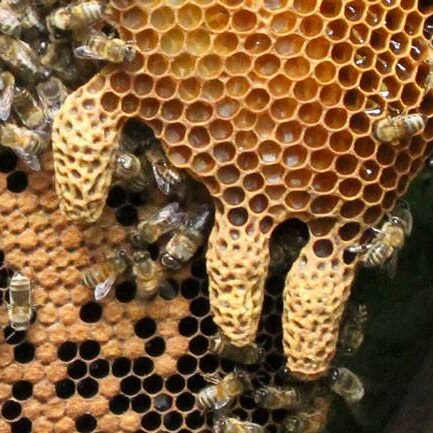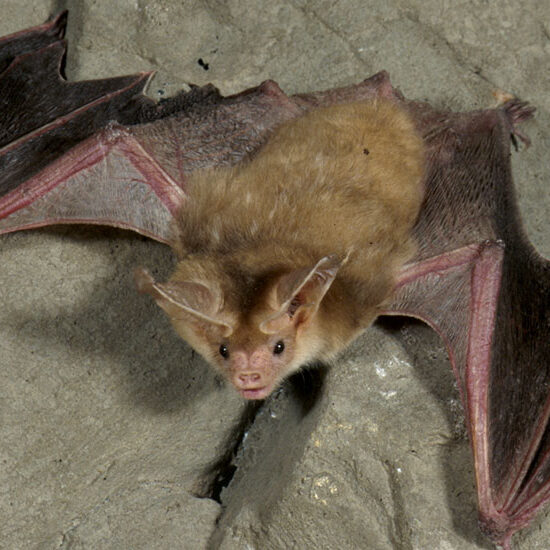
Pollinator Project
Our garden hosts the largest community beeyard in the State of Maryland. Our honeybees pollinate a 3-mile radius around our garden covering most of Curtis Bay, Brooklyn, and Brooklyn Park.
In addition, we rehome swarms and established honeybee hives throughout Baltimore.
Our Master Beekeeper takes accepts apprentices each year to assist in the beeyard and learn the art of apiculture.

Native Bat Project
Maryland is home to 10 species of bats. All 10 species of bats occurring in Maryland are considered to be Species of Greatest Conservation Need. In Maryland, all of our bat species fall into the Microchiroptera group and eat insects such as mosquitoes, stinkbugs, moths, and more. Our state’s bats can be subdivided our into tree bats and cave bats. In general, tree bats either migrate or spend the winter in tree cavities, under bark, or even under leaf litter. Cave bats tend to hibernate in caves or tunnels.
We provide bat houses for hundreds of urban bats. Bats are extremely important in reducing pest insects to include mosquitoes that spread the Zika and West Nile viruses.

Urban Wildlife
There are few refuges for urban wildlife around Baltimore. This has resulted in wildlife migrating into vacant and overgrown properties. Mammals such as bats, woodchucks, possum, and fox make their homes in our garden. Majestic birds such as condors, red-tailed hawks, and great horned owls can often be found resting in our garden.

Our Fowl
Chickens
Our garden hosts a mixed flock of chickens. Many of our hens are rescue birds from hording situations or strays picked up my Animal Control units in Maryland. Our chickens free range each day gobbling up pests such as hornworms, ticks, wax moths, and cucumber beetles. When laying at their peak they produce a dozen eggs a day! Read the latest about egg production here.
Turkeys
Our garden is home to the turkey duo Hazel & Cha Cha. They are domesticated white breasted turkeys. Turkeys are a truly American animal popular as meat birds.
Our Waterfowl
Ducks
Currently we a small flock of ducks. Male ducks are called ‘drakes’. We keep ducks to reduce garden pests, promote waterfowl education, and their delicious eggs. Nutritionally, duck eggs are superior to chicken eggs. Geese
We have two young geese – Filbert and Gwen! Our geese provide protection to the waterfowl flock by running off predators. They do lay eggs, but are seasonal layers only laying in spring.


Our Honeybees
The European Honeybee (apis mellifera) is an important pillar for agriculture. More than 30% of our fruits & vegetables depend on pollinators while 90% of native plants worldwide require pollinators. Both honeybees and native pollinators are faced with tremendous challenges to include foreign parasites, habitat destruction, diseases, and some byproducts in pesticides.
In addition to their contributions from pollination, we harvest surplus honey and beeswax each year. We currently host the largest community garden beeyard in the State of Maryland.
Our Dwarf Goats & Miniature Sheep
Our garden is proud to host Nigerian Dwarf Goat. Goats are one of the earliest domesticated animals – domesticated over 9,000 years ago! They are the first animals to be milked by humans.
We have two shetland sheep that graze in our garden. Sheep are distant cousins of goats and the source of the fiber wool. Every spring our sheep are sheared and their coats are spun into yawn.
Our goats and sheep help clear brush around the garden in areas we allow them to pasture. We get cleared land and they get some delicious brush and grass to eat!

